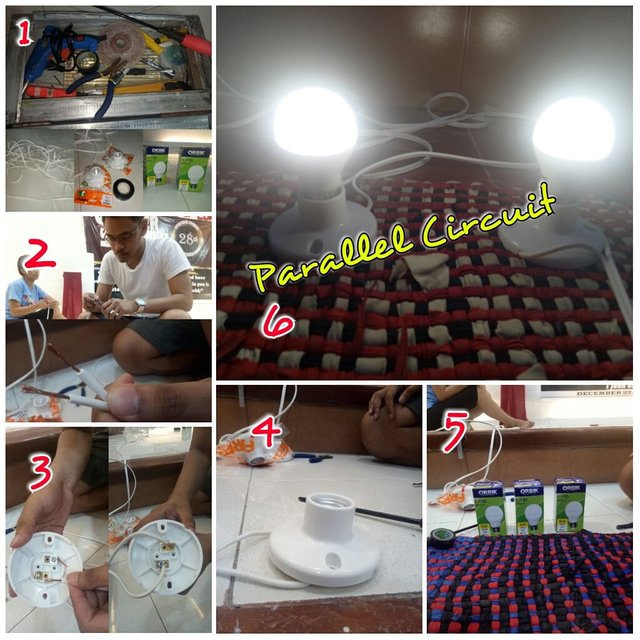UNDERSTANDING PARALLEL CIRCUIT
Did you know that there are two types of circuit when connecting electrical devices to a power source? Its the Series Circuit and Parallel Circuit.
Today i will show you how to make a Parallel Circuit and how it works in a simple way:!
The advantage to a parallel circuit is that if one device malfunctions, the flow of electricity will not stop, as it will in a series circuit. That's why i choose to recommend parallel circuit. And In case of break in the cable or removal of any lamp will not break the all circuits, in other words, other lights/lamps will still work and glow. As more lamps are added, they will all be reduced in brightness. Because voltages is shared or divided in a series circuit. The disadvantage of it is that, more size of cable wire is used in parallel lighting circuit wiring.
|A parallel circuit is one that has two or more paths for the electricity to flow, the loads are parallel to each other. If the loads in this circuit were light bulbs and one blew out, there is still current flowing to the others because they are still in a direct path from the negative to positive terminals of the battery.
UNDERSTANDING & CALCULATING PARALLEL CIRCUITS - EXPLANATION
A Parallel circuit is one with several different paths for the electricity to travel. It's like a river that has been divided up into smaller streams, however, all the streams come back to the same point to form the river once again.
The parallel circuit has very different characteristics than a series circuit. For one, the total resistance of a Parallel Circuit is NOT equal to the sum of the resistors (like in a series circuit). The total resistance in a parallel circuit is always less than any of the branch resistances. Adding more parallel resistances to the paths causes the total resistance in the circuit to decrease. As you add more and more branches to the circuit the total current will increase because Ohm's Law states that the lower the resistance, the higher the current.
BASIC RULES
A Parallel circuit has certain characteristics and basic rules:
➡A parallel circuit has two or more paths for current to flow through.
➡Voltage is the same across each component of the parallel circuit.
➡The sum of the currents through each path is equal to the total current that flows from the source.
➡You can find total resistance in a Parallel circuit with the following formula:
1/Rt = 1/R1 + 1/R2 + 1/R3 +...
Rt = R (t)otal
If one of the parallel paths is broken, current will continue to flow in all the other paths.|
..... end of source discusssion.
Here is a simple instruction how;
Just follow the numbering orders on the picture provided:

Prepare your materials.
Such as: Bulb, socketbulb, wires, wire cutter etc.Remove Insulator.
At the edge of your wires, take atleast 5-6in., and remove its insulator ( or the rubber). See picture above.Connect to Socketbulb.
After removing the insulator, get the socketbulb and attach or connect it to the connection part of the socket found at the bottom of it. (Do a proper connectivity).Check if properly connected.
Check always if properly connected or attached your wire so that no failure of lightning after. ( reminder- kindly turn off your power near you for safety measures)Check the bulb.
Of course, we need to check always the bulb if it has deffects.Insert the bulb.
And were done, properly insert the bulb with the finished bulbsocket with wire.
And repeat these steps, til the number of bulbs you wanted for each parallel.
(Please consult any knowledgable of electricity once doing this.)
Thank you. Godbless.
